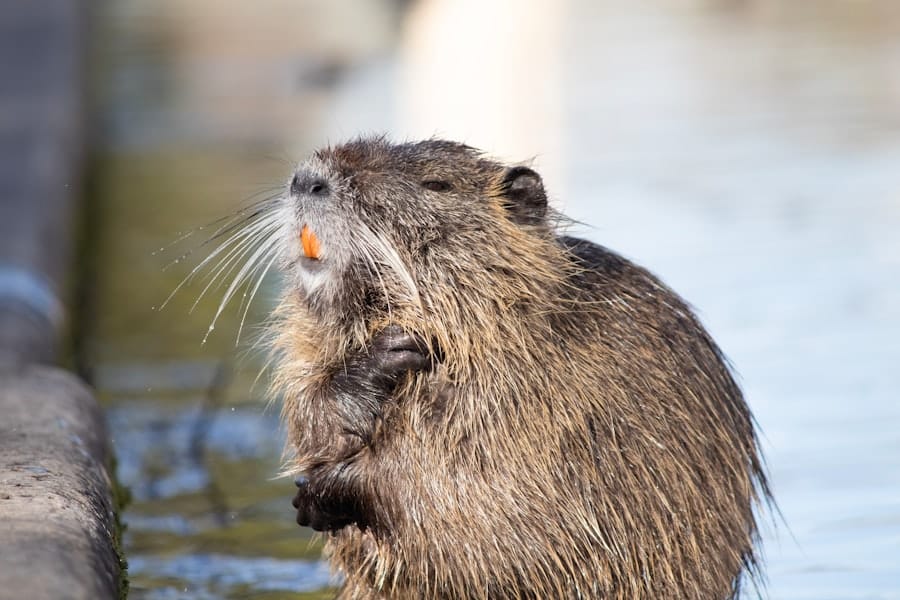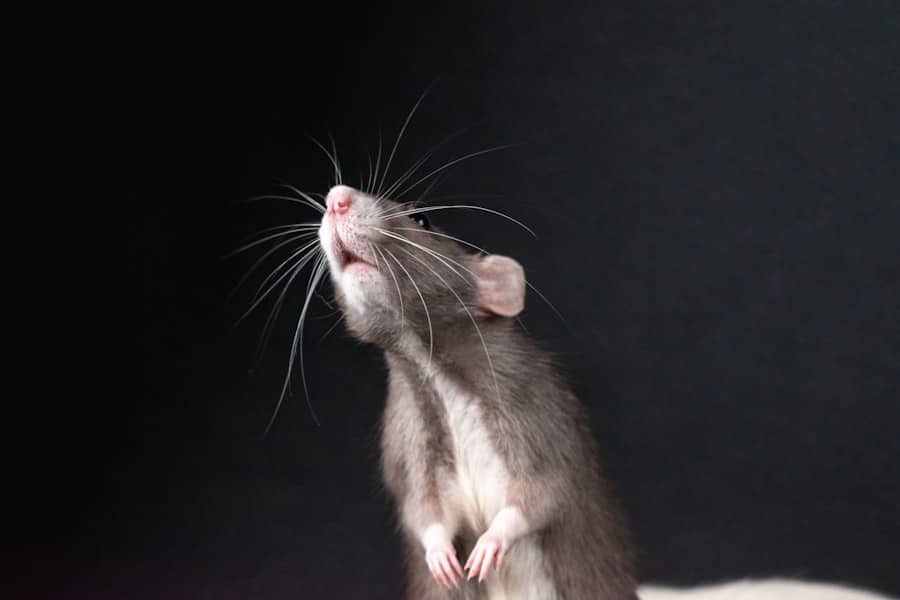Pest elimination is a crucial aspect of maintaining a healthy and comfortable living environment. You may not realize it, but pests can invade your home without warning, bringing with them a host of problems that can affect your health and well-being. From insects to rodents, these unwelcome guests can disrupt your daily life and create an atmosphere of unease.
Understanding the importance of pest control is the first step in safeguarding your home and ensuring that it remains a sanctuary for you and your family. As you delve into the world of pest elimination, you will discover various strategies and methods designed to combat these intruders effectively. Whether you are dealing with a minor ant problem or a full-blown rodent infestation, knowing how to address these issues is essential.
This article will explore some of the most common household pests, the risks they pose, and the best practices for eliminating them while maintaining a safe and healthy environment.
Key Takeaways
- Pest elimination is crucial for maintaining a healthy and safe living environment.
- Cockroaches are a common household pest that can spread diseases and trigger allergies.
- Ants may be a nuisance in the home, contaminating food and causing property damage.
- Rodents pose dangers and can cause destruction to property, as well as spread diseases.
- Bed bugs are an increasing problem, causing discomfort and potential health risks for humans.
Cockroaches: A Common Household Pest
Cockroaches are among the most notorious household pests, known for their resilience and ability to thrive in various environments. You might find them lurking in dark corners, under sinks, or even in your pantry, where they can contaminate food and surfaces. Their presence is not only unsettling but also indicative of poor sanitation or structural issues within your home.
Understanding their habits and habitats can help you take proactive measures to eliminate them before they become a significant problem. These pests are nocturnal creatures, often emerging at night in search of food and water. They reproduce quickly, which means that a small infestation can escalate into a larger one in no time.
If you notice even a single cockroach scuttling across your floor, it’s essential to act swiftly. You may want to inspect your home for potential entry points, such as cracks in walls or gaps around pipes, and seal them to prevent further access. Additionally, maintaining cleanliness by regularly cleaning up crumbs and spills can significantly reduce the likelihood of attracting these unwelcome visitors.
Ants: Nuisance in the Home

Ants are another common nuisance that can invade your home, often in search of food or shelter. You may have experienced the frustration of seeing a trail of ants marching across your kitchen counter or floor, seemingly out of nowhere. These tiny creatures can be persistent and challenging to eliminate once they establish a colony within your walls or yard.
Understanding their behavior is key to effectively managing an ant infestation. Ants communicate through pheromones, which they use to signal other ants about food sources. This means that if you spot a few ants in your home, there are likely many more nearby.
To combat this issue, you should identify the type of ant invading your space, as different species may require different approaches for elimination. You might consider using bait traps that attract ants and allow them to carry poison back to their colony, effectively targeting the source of the problem rather than just the visible ants.
Rodents: Dangers and Destruction
Rodents, such as mice and rats, pose significant dangers to both your health and property. These pests are not only capable of causing structural damage by gnawing on wires, insulation, and wood but also carry diseases that can affect humans and pets alike. If you suspect that rodents have made their way into your home, it’s crucial to take immediate action to mitigate the risks associated with their presence.
You may notice signs of rodent activity, such as droppings, gnaw marks, or nests made from shredded materials. These indicators should not be ignored, as they can lead to more severe infestations if left unchecked. To eliminate rodents effectively, you should consider setting traps or using bait stations strategically placed along their travel routes.
Additionally, sealing entry points around your home will help prevent future infestations and protect your living space from these destructive pests.
Bed Bugs: An Increasing Problem
Bed bugs have become an increasingly prevalent issue in recent years, causing distress for many homeowners and travelers alike. These small, elusive insects feed on human blood while you sleep, leaving itchy bites on your skin as evidence of their presence. You may find them hiding in mattresses, bed frames, or even behind wallpaper, making them particularly challenging to detect until an infestation has already taken hold.
The stigma surrounding bed bugs can make dealing with an infestation even more difficult. You might feel embarrassed or anxious about having them in your home, but it’s essential to remember that anyone can fall victim to these pests. If you suspect a bed bug problem, thorough inspection and immediate action are necessary.
Washing bedding in hot water and vacuuming regularly can help reduce their numbers, but professional extermination may be required for complete eradication.
The Health Risks of Pest Infestations

Direct Health Risks
Many pests are known to transmit diseases through bites or contact with contaminated surfaces. For example, cockroaches can trigger asthma attacks and allergies due to their droppings and shed skin. Similarly, rodents can spread diseases such as hantavirus and leptospirosis through their urine and droppings.
Indirect Health Risks
In addition to direct health risks, pests can also compromise the overall hygiene of your home. The presence of insects or rodents can lead to contamination of food sources and surfaces, increasing the likelihood of foodborne illnesses.
Prioritizing a Pest-Free Environment
As you consider pest elimination strategies, it’s essential to recognize the potential health implications associated with infestations and prioritize maintaining a clean and pest-free environment for your family’s well-being.
Methods of Pest Elimination
When it comes to pest elimination, various methods are available to address different types of infestations effectively. You may choose between chemical treatments, traps, or natural remedies depending on your preferences and the severity of the problem. Chemical pesticides are often effective for quick eradication but may pose risks to human health and the environment if not used correctly.
Traps are another popular option for eliminating pests like rodents and insects. You might find snap traps or glue boards particularly useful for catching mice or cockroaches without resorting to chemicals. Additionally, natural remedies such as diatomaceous earth or essential oils can deter pests without harmful side effects.
Whichever method you choose, it’s essential to follow instructions carefully and consider the safety of your family and pets during the elimination process.
Prevention of Pest Infestations
Preventing pest infestations is often more effective than dealing with them after they occur. You can take several proactive measures to minimize the risk of pests invading your home. Start by maintaining cleanliness throughout your living space; regular vacuuming and sweeping can eliminate food particles that attract pests.
Sealing entry points is another critical step in prevention. Inspect your home for cracks in walls, gaps around windows and doors, and holes around pipes where pests might enter. By addressing these vulnerabilities, you create a barrier that makes it more difficult for pests to gain access to your home.
Additionally, consider storing food in airtight containers and keeping outdoor areas tidy to reduce potential nesting sites for pests.
Hiring Professional Pest Control Services
While DIY methods can be effective for minor infestations, hiring professional pest control services may be necessary for more severe problems or persistent issues. Professionals have access to advanced tools and techniques that can target pests more effectively than over-the-counter solutions. When you enlist the help of experts, you benefit from their knowledge and experience in identifying pest species and implementing appropriate treatment plans.
Before hiring a pest control service, it’s essential to do your research. Look for companies with positive reviews and certifications that demonstrate their expertise in pest management. A reputable service will conduct a thorough inspection of your property before recommending treatment options tailored to your specific needs.
By investing in professional assistance when needed, you ensure a more comprehensive approach to pest elimination.
Eco-Friendly Pest Elimination Options
As awareness of environmental issues grows, many homeowners are seeking eco-friendly pest elimination options that minimize harm to the planet while effectively addressing infestations. You might consider using natural repellents made from essential oils or plant-based ingredients that deter pests without toxic chemicals. For example, peppermint oil is known for its ability to repel spiders and ants when used as a spray around entry points.
Another eco-friendly approach involves encouraging natural predators into your garden or yard space. Birds, bats, and beneficial insects like ladybugs can help control pest populations without the need for chemical interventions. By fostering a balanced ecosystem in your outdoor areas, you create an environment less conducive to pest infestations while promoting biodiversity.
Maintaining a Pest-Free Environment
Maintaining a pest-free environment requires vigilance and proactive measures on your part. By understanding common household pests and their behaviors, you empower yourself to take action before infestations escalate into significant problems. Regular cleaning practices, sealing entry points, and employing effective elimination methods are all essential components of successful pest management.
As you navigate the challenges of pest control, remember that prevention is often the best strategy. By creating an inhospitable environment for pests through cleanliness and maintenance, you significantly reduce the likelihood of infestations occurring in the first place. Whether you choose DIY methods or enlist professional help when necessary, staying informed about pest management will help ensure that your home remains a safe haven for you and your loved ones.
If you are interested in learning more about pest control services in different cities, you may want to check out this article on the best pest control service in Colorado Springs, Colorado. This article provides valuable information on how to effectively eliminate pests in this area.
FAQs
What are the 4 pests eliminated?
The “Four Pests Campaign” was a campaign in China from 1958 to 1962 to eliminate rats, flies, mosquitoes, and sparrows.
Why were these pests targeted for elimination?
These pests were targeted for elimination because they were seen as threats to public health and agricultural production. Rats spread disease, flies and mosquitoes were vectors for diseases such as malaria, and sparrows were believed to eat large amounts of grain.
How were the pests eliminated?
The campaign used various methods to eliminate the pests, including mass extermination, public education, and the use of pesticides and traps.
What were the consequences of the Four Pests Campaign?
The campaign had unintended consequences, such as the near extinction of sparrows leading to an increase in crop-eating insects, and the spread of diseases due to the disruption of the ecosystem.
